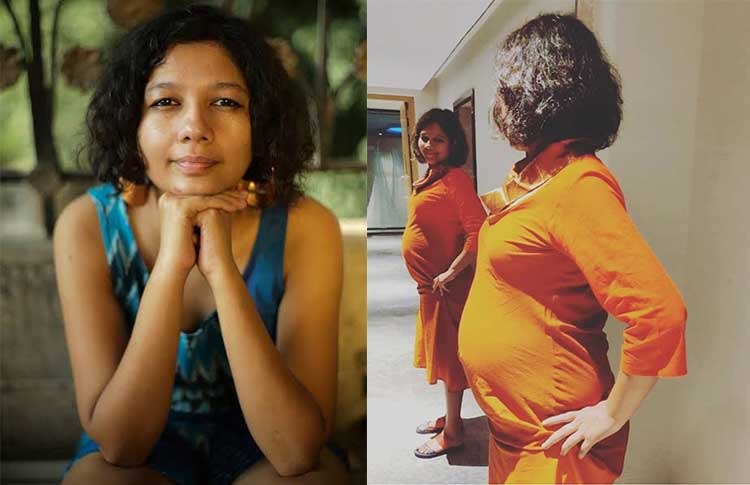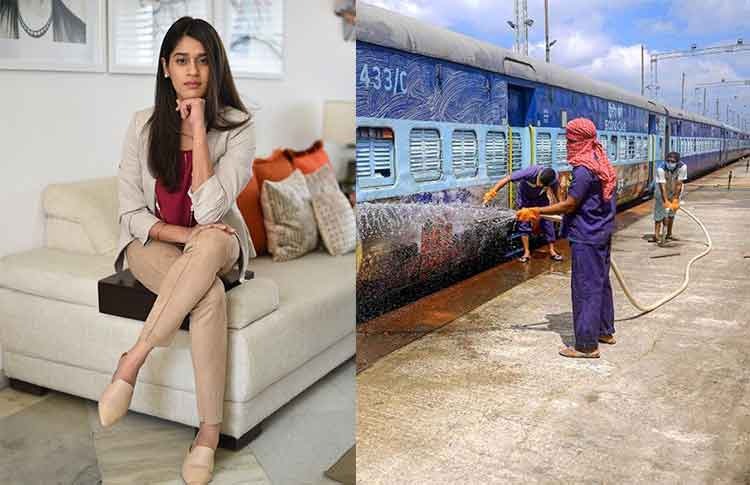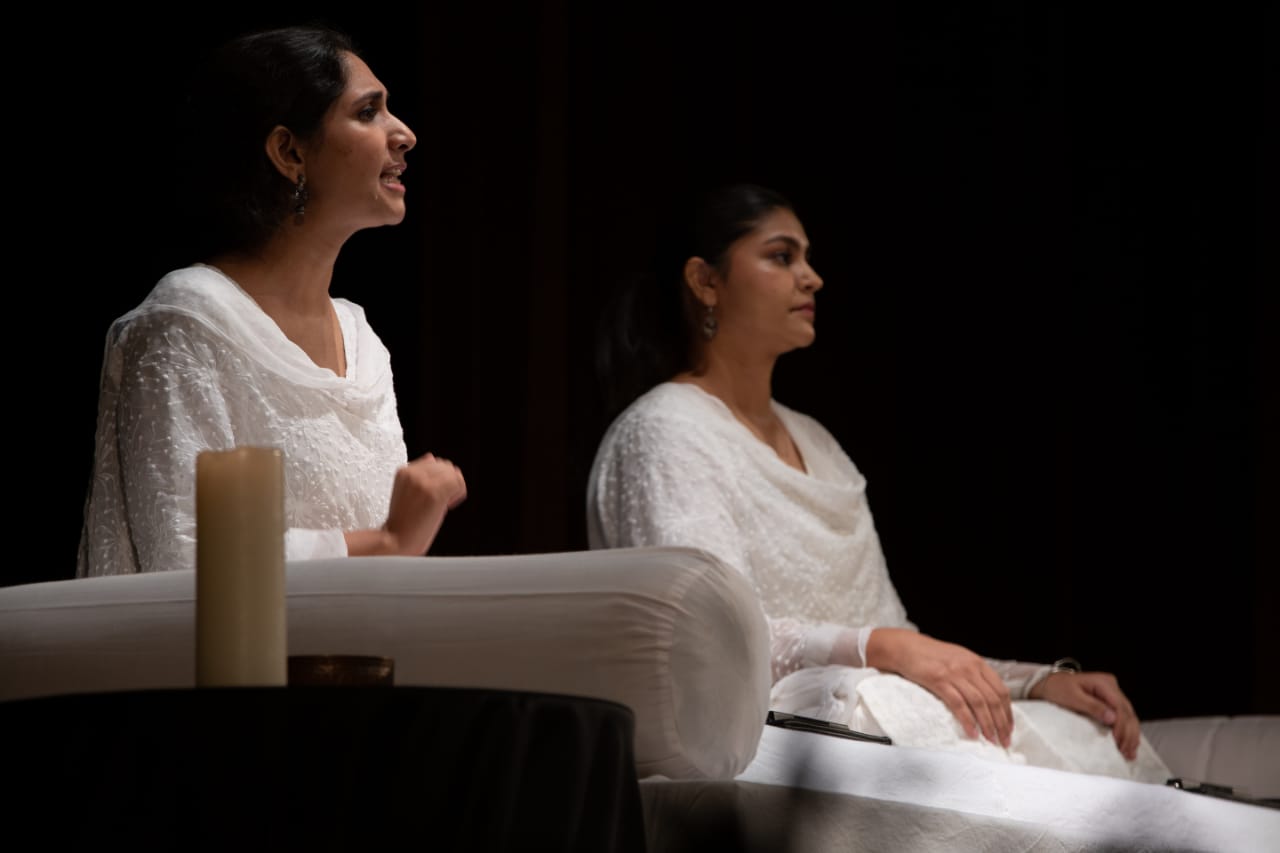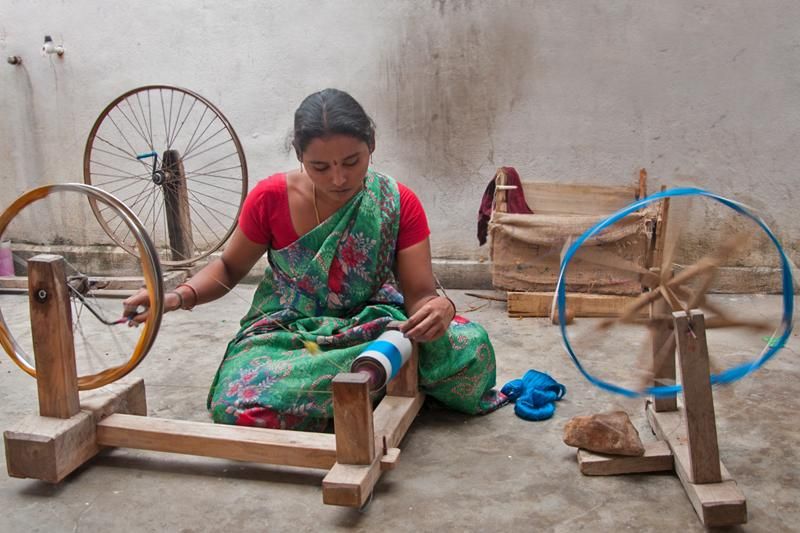Gitanjali Sarangan Of Snehadhara On How We Need A Better Understanding Of Intellectual Disabilities
- IWB Post
- January 31, 2019

The Snehadhara Foundation has pioneered using Arts-Based Therapy as the primary methodology in working with people with special needs. “Snehadhara began with that vision in mind, where we harnessed the power of the arts in working with children across age groups with physical, mental and learning disabilities”, says Gitanjali Sarangan, founder of Snehadhara Foundation.
She is an educationist, a social entrepreneur, an ABT (Arts-Based Therapy) Practitioner, an ABT Guide and Educator. Excerpts from a conversation with her:
Starting and helming such a unique organization, I am sure you must have had some wonderful experiences. Tell us about how the journey started.
The journey has evolved a lot over the years. It all began as an experiment to create therapeutic learning spaces for special needs children. Our underlying drive has been to start redefining what ‘normalcy’ is actually about. Snehadhara Foundation began as a response to the need of one child and today it has grown to become a well-defined method learning catering to the different set of needs of children with learning disabilities.
With a vision to foster a culture of respect and belonging, Snehadhara aims to create inclusionary spaces that welcome, acknowledge, affirm, and celebrate the value of all learners. Today we have crafted three initiatives in pursuit of this goal: Direct Care, impART and Prajnadhara. The ambit of Snehadhara’s mission encompasses working with children with disabilities and across age groups using the Arts (Direct Care). Co-creation of empathetic learning spaces in schools, colleges, corporates and the community (impART); as well as certification for Arts-Based Therapy to construct a facilitation model for learning and inclusion (Prajnadhara).
How has the journey been so far?
In retrospect, the journey has been very inspiring, self-fulfilling and replete with learning. So each program that we initiated has paved the way for another one. What began as DirectCare then gave way to impART. Then we also started associating with other organizations, and this expansion gave birth to Prajñādhara, which is about training people in the Arts-Based Therapy (ABT) courses. So in this way, our journey has come a full circle, I believe, where we started out providing courses catering to special needs kids, and now training people to be an active contributor of this journey – basically equipping people with the necessary skills by providing ABT certificate course.
Talking about Arts-Based Therapy, it is something quite unheard of. Could you tell us more about it?
So Arts-Based Therapy was envisioned and brought to India way back in 2005 by an organization called World Center for Creative Learning Foundation, Pune. That’s where I began as an Arts-Based Therapy practitioner. From there I went on to become a guide and now an educator. In simple terms, Arts-Based Therapy is the evidence-based use of multiple art forms such as visual art, theatre, music, dance, etc to be able to achieve therapeutic goals in special needs population. ABT works for various special people and addresses issues in learning disabilities, intellectual challenges, in mental health, in de-addiction, palliative care and pain management, in rehabilitation for trafficking, abuse, domestic violence issues, in issues around LGBT community and communities affected by violence and trauma.
Moving on to another one of your programs, impART, do tell us about it.
impART is an acronym which stands for Intervention Methodologies and Practices using the Arts. This division birthed from our work with children with special needs. We realized that conventional methods of learning have been inadequate to help children with developmental disabilities. As a result, large numbers of such children have been excluded from school systems. This can only be reversed if we rethink how learning occurs for such children, and thereafter get school systems to embrace the new approach. Our work showed that the arts provided an effective alternative approach to learning for children with developmental disabilities, and moreover, that this is, in fact, more universally true – that many more children, not only those who are learning-disabled, could benefit from arts-based learning.
impART has incubated various outreach projects with inclusive schools, other learning centres working with the disabled, government schools and has trained various groups that include students, teachers, parents, therapists, educationists. impART focuses on using the methodology of the Arts to create an ecosystem of change makers who will redefine learning, inclusion, empowerment, development and impact. Through our engagement with educational institutions we are set out to build multi-grade, multi-age and multi-ability classrooms, training-of-trainer models for professional development, peer teaching and converting schools into social labs of creative innovation. We have worked with over 25 organizations pan India in the past three years.
You spoke about mainstream schooling and the ones tailored for children with special needs. What are the challenges that you’ve faced and do you think both can work mutually, hand in hand?
The thing about our methodologies is that we haven’t designed it to help children with learning disabilities get into mainstream schooling. On the other hand, we do understand that the needs of both ways of learning are diverse, so we design our programs accordingly. What we also understand is that there may be children in mainstream schools who may have learning disabilities, but many times go unnoticed. So our program is also for identifying such children to help them cope.
To answer the second part of your question, I would aspire for mainstream schools to be inclusive towards children with special needs, however, as of today, the regular classroom is not ready – concerning the human as well as intellectual infrastructure.
What led you to do something like this, your inspiration for starting Snehadhara?
Working with understanding how people learn has always been my area of expertise. My quest has been to find answers to questions like, at what age do we start learning, what are the diverse learning needs of children, why is it difficult for adults to unlearn something, etc. My inspiration to set up Snehadhara was definitely a young girl named Sneha. She was a child with Down’s Syndrome, brought to us at the age of two. We were finding it difficult to start her schooling as no school was ready to admit her with her condition. So we thought of creating our own learning space for her and more kids like her, and that paved the way for the organization. Now she’s a nine-year-old girl who speaks five Indian languages and has found a space for her and 50 others to learn together.
During this journey, what were the challenges that you have faced?
First of all the way in which people understand art and its scope is very myopic. Not many people understand the full potential of the arts. So the methodology was very new and the fact that you can work with children in therapeutic spaces using Arts-Based Therapy as a primary methodology was way ahead of its time. Given its nascent stage, the one challenge I anticipated was that people would take a lot of time to warm up to this idea, and until then it would be quite a struggle. Acceptance of people in the community continues to be a challenge even today. Another challenge is finding the right kind of people equipped with the necessary skills to be contributors in our programs. So human infrastructure is an issue. But converting every adversity into an opportunity has been something that contributes to our growth and success.
What is your take on the way in which the current society deals with children with special needs?
I feel it all begins with the wrong understanding of the term ‘disability’. Most of us understand disability today and relate it to a wheelchair, visual impairment, braille etc but we do not understand autism or intellectual disabilities. There sure is a lot of social stigma around it. The only way to overcome this stigma is to bridge the knowledge gap with respect to such disabilities. People need to start understanding that the learning needs of every child is unique and follows its own pace. Another sad thing is that even in a regular classroom we are not ready to accept diversity in learning.
Lastly, any final words of wisdom and advice for all our readers and for parents who are taking care of disabled children?
Social Inclusion is as much about these children reaching their potential as it is about us appealing to the compassionate side that lies within and around each one of us. As a society, there is no other way to be, what we have to gain is far greater than what all of us together could give. It is time we start the payback.
To answer your second question, to every parent the best thing you can do for your child is to start with taking care of yourself. The best gift you can give your child is the gift of your presence. In your well-being, emotional and physio-social lies the well-being of a society. There is a society out there, in each one of you which is going to help expand the Universe of these children. In the process of thinking together, let’s create an ethos, a realm of possibilities for all.
This article was first published on March 17, 2018.
- 0
- 0













